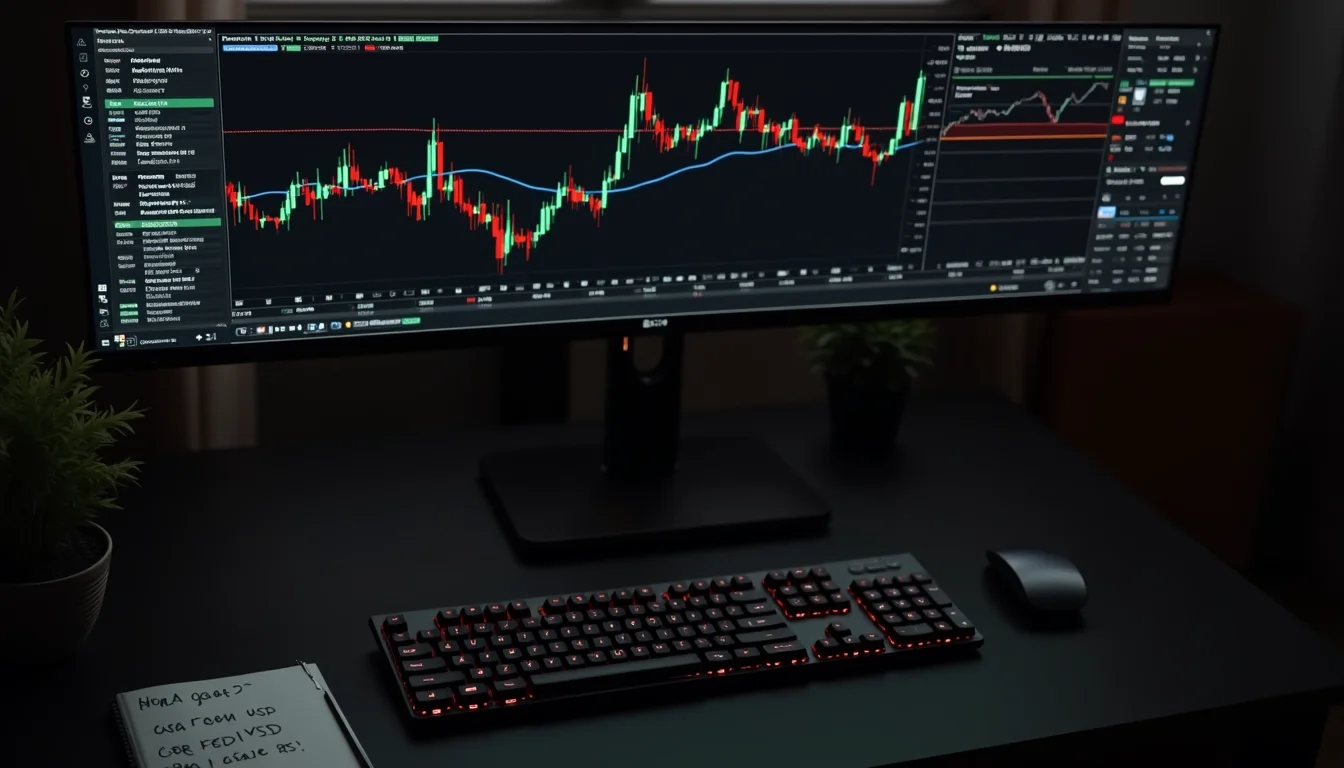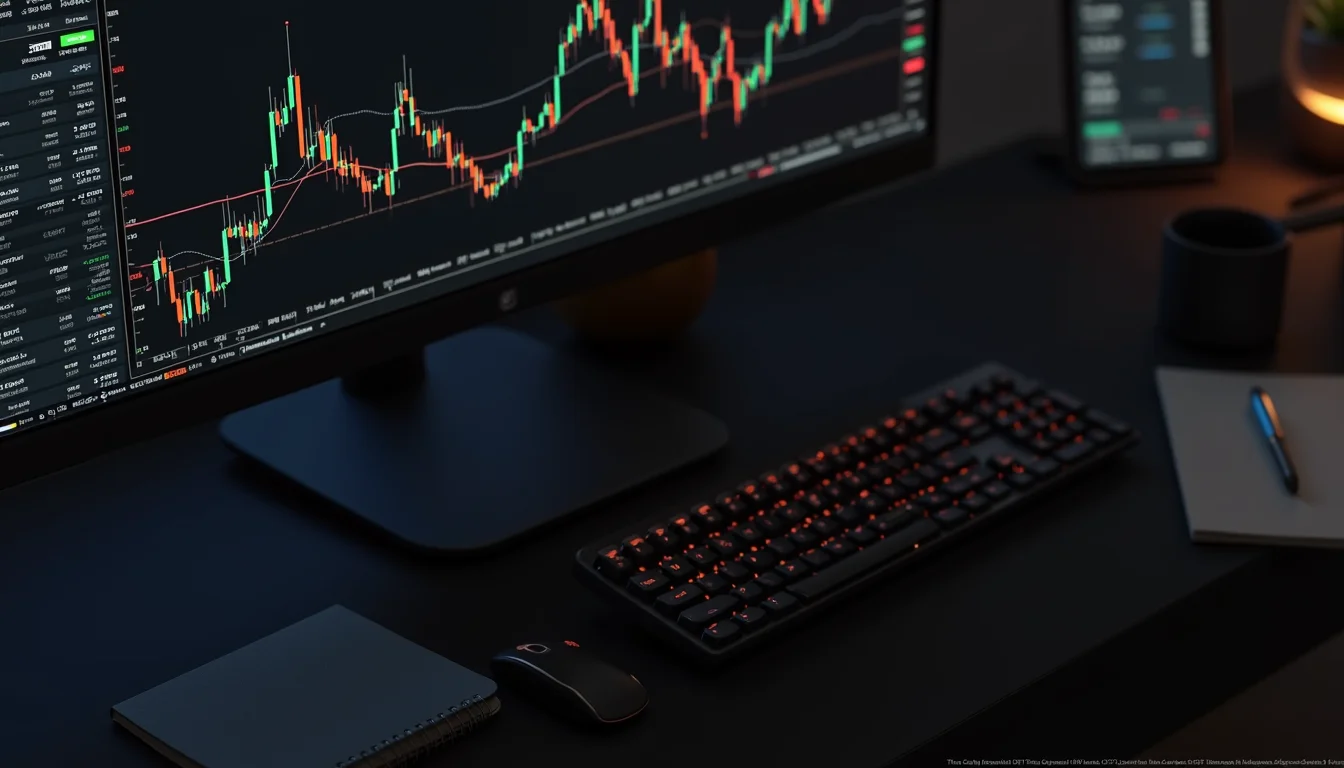I remember staring at my first trading account with exactly $100, wondering if I could actually make this work. The question "Is $100 enough to start forex?" kept running through my mind as I placed my first trade. After blowing up multiple small accounts and eventually building consistent profitability, I've learned that the answer isn't as simple as yes or no. It's about how you manage that capital, your risk tolerance, and your trading approach. In this comprehensive guide, I'll walk you through exactly what you need to know about starting with limited capital and how to make it work through proper risk management.
The Real Answer to "Is $100 enough to start forex?"
When traders ask "Is $100 enough to start forex?", they're usually looking for permission to begin their trading journey with minimal risk. The truth is, I've seen traders turn $100 into $1,000 and others lose it in a single bad trade. The difference always comes down to risk management and strategy execution.
Understanding Position Sizing with Small Accounts
With a $100 account, you're working with micro lots (0.01 lots), which means each pip movement is worth approximately $0.10. If you risk 2% of your account per trade ($2), you can withstand a 20-pip stop loss. This requires precise entry points and tight risk management. I've found that currency pairs with lower volatility like EUR/GBP or USD/CHF often work better for small accounts because they typically have smaller daily ranges.
The Psychological Challenge of Small Accounts
Trading with $100 creates unique psychological pressures. When you see a $5 profit, that's 5% of your account - it feels massive. This can lead to either taking profits too early or holding losers too long hoping they'll turn around. I struggled with this myself during my first six months, constantly overtrading to "make something happen" with my limited capital.
Risk Management Fundamentals for Small Accounts
Proper risk management becomes even more critical when you're starting with limited capital. The margin for error is virtually non-existent, and one significant mistake can wipe out your entire account.
The 1% Rule and Why It Matters
Most professional traders recommend risking no more than 1-2% of your account per trade. With a $100 account, that means your maximum risk per trade should be $1-2. Here's what that looks like in practice:
- Micro lots only (0.01 lots)
- Stop losses no wider than 10-20 pips
- Focus on lower volatility pairs
- Daily loss limit of $5 (5% of account)
Building Your Risk Management Framework
Creating a solid risk management framework is what separates successful small account traders from those who consistently lose. Here's the exact framework I used when building my first profitable $100 account:
- Daily Loss Limit: Stop trading for the day after losing $5 (5% of account)
- Position Sizing: Never risk more than $2 per trade (2% rule)
- Maximum Open Trades: No more than 2 positions simultaneously
- Risk-Reward Ratio: Minimum 1:2, meaning target at least 2x your risk
Practical Trading Strategies for $100 Accounts
When working with limited capital, your trading strategy needs to be specifically designed for small account constraints. Generic strategies often fail because they don't account for the unique challenges of micro-lot trading.
Scalping with Precision Entries
Scalping can work well with small accounts because you're targeting small, consistent gains. I developed a simple scalping strategy using the 5-minute chart with these parameters:
- EUR/USD or GBP/USD during London session
- 5-10 pip profit targets
- 5 pip stop losses
- RSI and moving average confluence for entries
This approach requires using tools like our TradeMaster Pro Strategy to identify high-probability setups with tight stop losses.
Swing Trading with Proper Position Sizing
While swing trading typically requires wider stops, it's still possible with $100 if you choose the right instruments. I've found that trading USD/CAD or AUD/USD with 15-20 pip stops can work effectively when you wait for clear technical levels to develop.
Is $100 enough to start forex? Realistic Expectations and Timeline
Many beginners ask "Is $100 enough to start forex?" hoping for quick riches. The reality is more nuanced. With proper risk management, you can grow a $100 account, but it requires patience and discipline.
Realistic Growth Projections
Assuming you risk 2% per trade with a 1:2 risk-reward ratio and maintain a 55% win rate (realistic for good traders), here's what consistent growth looks like:
- Month 1: $100 to $110 (10% growth)
- Month 3: $100 to $133 (33% growth)
- Month 6: $100 to $177 (77% growth)
- Year 1: $100 to $314 (214% growth)
These numbers assume compound growth and consistent execution. Most traders fail because they get impatient and increase risk prematurely.
The Importance of a Trading Journal
Keeping detailed records is crucial when starting small. I tracked every trade in my first $100 account, including:
- Entry and exit prices
- Risk percentage and dollar amount
- Emotional state during the trade
- Screenshots of the setup
- Lessons learned from each trade
This data became invaluable for refining my approach and developing the strategies I use today.
Advanced Risk Management Techniques
Once you've mastered the basics, these advanced techniques can help optimize your risk management and improve your consistency with small accounts.
Dynamic Position Sizing
Instead of fixed position sizes, I now use dynamic sizing based on market conditions and setup quality. For A+ setups (clear technical levels, high probability), I might risk 1.5%. For B setups (decent but not perfect), I risk 0.5%. This approach requires deep market understanding, which you can develop through resources like our guide to finding profitable strategies.
Correlation Risk Management
Many beginners don't realize that trading multiple currency pairs simultaneously can expose them to hidden risks. When I lost $15 in one day trading EUR/USD, GBP/USD, and AUD/USD (all correlated), I learned this lesson the hard way. Now I use tools from TradingView to monitor correlation before opening multiple positions.
Common Mistakes When Starting with $100
Having mentored dozens of traders starting with small accounts, I've identified consistent patterns in what causes failure. Avoid these common pitfalls:
Overtrading and Revenge Trading
The temptation to "make back" losses quickly is overwhelming with small accounts. After a $3 loss, traders often double their position size trying to recover, which usually leads to larger losses. I implemented a mandatory 4-hour break after any losing trade, which dramatically improved my results.
Ignoring Trading Costs
With micro accounts, spreads and commissions eat into profits significantly. A 2-pip spread on EUR/USD represents 20% of your risk on a 10-pip stop loss trade. I learned to factor trading costs into my risk calculations, often avoiding pairs with spreads wider than 1.5 pips.
Is $100 enough to start forex? Building Toward Consistency
The journey from consistent small losses to consistent small gains is where most traders give up. This transition requires refining your strategy execution and emotional control.
Developing Your Edge
Every successful trader develops a specific edge - something they do better than the market average. For me, it was trading London session breakouts using specific candlestick patterns. Your edge might be different, but you need to identify and master it. Resources like our complete trading strategy guide can help you develop this crucial component.
Scaling Your Account Properly
Once you achieve three consecutive profitable months, you can consider scaling your position sizes. I increased my risk per trade from 2% to 3% only after demonstrating consistent profitability, and even then, I did it gradually over several months.
Advanced Tips from a Professional Trader
After years of trading everything from $100 accounts to six-figure portfolios, I've distilled the most critical advanced techniques for small account success.
Master one timeframe and one session first. I spent my first six months trading only the London session on the 15-minute chart. This limitation forced me to become an expert in specific market conditions rather than a mediocre trader across all conditions.
Use technology to your advantage. Modern trading tools can significantly improve your edge. I regularly use custom indicators built with Pine Script to identify high-probability setups. If you're interested in developing your own tools, check out our Pine Script mastery guide.
Implement a weekly review process. Every Sunday, I review my previous week's trades, analyze what worked and what didn't, and adjust my approach for the coming week. This consistent refinement process is what separates professional traders from amateurs.
Wrapping Up: Making $100 Work in Forex
So, is $100 enough to start forex? Absolutely - but only if you approach it with the right mindset, risk management, and realistic expectations. The traders who succeed with small accounts are those who focus on consistency over quick profits and process over outcomes.
Your $100 account isn't about getting rich overnight - it's about proving you can trade profitably before committing significant capital. Treat it as your trading education cost, and focus on developing skills that will serve you regardless of account size.
Ready to take your trading to the next level? Explore our professional trading strategies or dive deeper into risk management with our guide to building profitable strategies. Have specific questions about managing small accounts? Reach out to our team - we're here to help you succeed.
Frequently Asked Questions
How long does it take to grow a $100 forex account?
Realistically, growing a $100 account takes months of consistent trading. With proper risk management, aim for 5-10% monthly growth. The goal isn't rapid growth but proving you can trade profitably before scaling up.
What's the best currency pair to trade with a small account?
I recommend starting with major pairs like EUR/USD or USD/JPY during their most active sessions. These typically have tighter spreads and better liquidity, which is crucial when trading micro lots with small stop losses.
Should I use leverage with a $100 account?
Leverage is necessary to trade forex with small accounts, but it must be used responsibly. Stick to 10:1 or 20:1 maximum leverage, and never let leverage tempt you into risking more than your predetermined percentage per trade.
How do I avoid blowing up my small account?
The three keys are: strict position sizing (never risk more than 2% per trade), daily loss limits (stop trading after losing 5% of your account), and emotional control (no revenge trading). Implement these rules religiously from day one.
When should I add more money to my trading account?
Only add more capital after you've achieved three consecutive months of profitability while following your risk management rules. The amount you add should be proportional to your demonstrated skill level and consistency.


